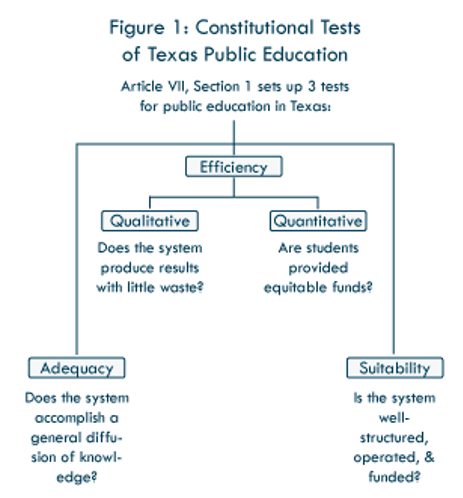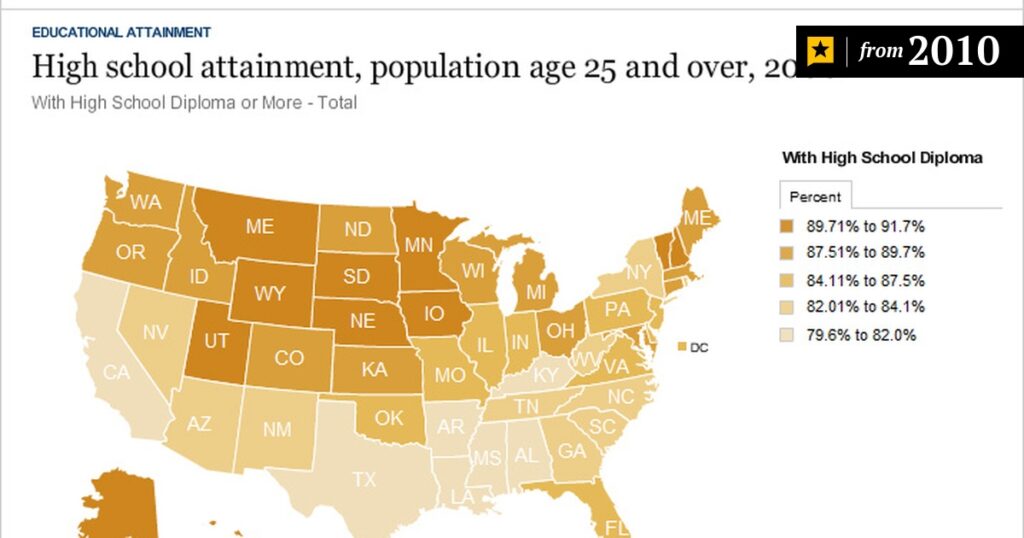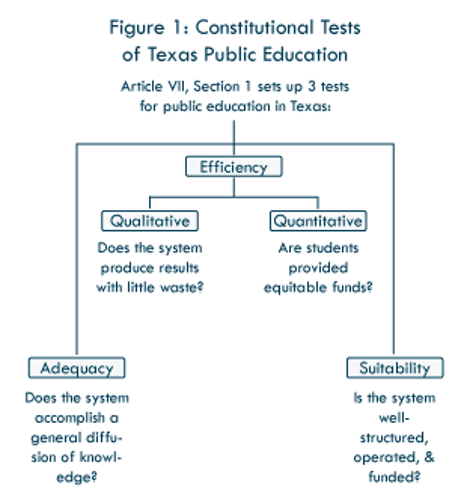The Texas public school system has long been a topic of debate and scrutiny. Many parents and educators alike question the effectiveness and quality of education provided in these schools. In this article, we will explore the strengths and weaknesses of the Texas public school system, taking into account factors such as student performance, funding, and teacher quality. By examining these key aspects, we aim to provide a comprehensive analysis of the state of education in Texas and shed light on whether the system is serving its students adequately.
This image is property of dallasnews.imgix.net.
Academic Performance
Standardized Test Scores
The academic performance of Texas public schools is often measured through standardized test scores. These scores provide an objective assessment of students’ knowledge and skills in various subjects. In recent years, Texas has made significant improvements in standardized test scores, with students consistently outperforming the national average. This indicates that the education system in Texas is effective in preparing students for these assessments and ensuring their academic success.
Graduation Rates
Graduation rates are another important measure of the quality of a public school system. The graduation rate in Texas has been steadily increasing over the years, reaching an all-time high in recent times. This demonstrates that the efforts of educators, administrators, and policymakers in Texas are focused on ensuring that students complete their high school education successfully. A higher graduation rate indicates that students are receiving the support and resources they need to complete their studies and enter the workforce or pursue higher education.
College Readiness
College readiness is an important factor to consider when evaluating the quality of a public school system. Texas public schools have been actively working to improve college readiness among their students. Many schools offer advanced placement courses, dual credit programs, and college prep classes to ensure that students are adequately prepared for higher education. Additionally, there are various initiatives in place to help students navigate the college application process and access financial aid. These efforts highlight the commitment of the Texas public school system to equipping students with the skills and knowledge needed for success in college.
Achievement Gap
Closing the achievement gap is a significant challenge faced by many public school systems, including Texas. The achievement gap refers to disparities in academic performance among different groups of students, such as those from low-income backgrounds or minority communities. Texas has implemented several programs and initiatives to address this gap and ensure that all students have access to quality education. These efforts include targeted resources and support for underprivileged students, specialized programs for English language learners, and initiatives to address racial and socioeconomic disparities. While progress has been made, continuous efforts are required to further narrow the achievement gap and ensure equal educational opportunities for all students.
Funding and Resources
Budget Allocation
The allocation of funding is a critical factor in determining the quality of a public school system. Texas has made substantial investments in education, with a significant portion of the state budget allocated to K-12 education. However, there have been ongoing debates and discussions regarding the equitable distribution of funds among districts. Efforts are being made to address these concerns and ensure that schools, regardless of their location or socioeconomic status, receive the resources they need to provide a quality education.
Teacher Salaries
Teacher salaries play a crucial role in attracting and retaining high-quality educators. In recent years, there has been a push to increase teacher salaries in Texas to make them more competitive with other professions. While progress has been made, there is still room for improvement. Higher salaries can incentivize talented individuals to enter and stay in the teaching profession, which in turn positively impacts the overall quality of education in Texas public schools.
Class Sizes
Class sizes have a direct impact on the quality of instruction and student outcomes. Smaller class sizes allow teachers to provide individualized attention and support to students, facilitating better learning experiences. Texas has implemented policies and initiatives to address class size concerns, particularly in early education. However, challenges still exist, particularly in schools with high enrollment rates. Continued efforts to reduce class sizes and maintain an optimal teacher-student ratio can lead to improved educational outcomes for students.
Facility Conditions
The condition of school facilities is an important aspect of a quality education system. Well-maintained and safe facilities create a conducive learning environment for students. Texas has been investing in infrastructure improvements and upgrades for its public schools. This includes modernizing existing facilities, constructing new buildings, and implementing safety measures. The state’s commitment to providing adequate and safe facilities demonstrates its dedication to offering students an optimal learning environment.

This image is property of www.texaspolicy.com.
Curriculum and Instruction
State Standards
State standards serve as the foundation for curriculum development and instructional practices in public schools. Texas has established rigorous academic standards that outline what students should know and be able to do at each grade level. These standards are designed to ensure that students develop a strong foundation of knowledge and skills across subjects. Regular review and updates of these standards are conducted to align them with the evolving needs of the workforce and society, ensuring that students receive a relevant and comprehensive education.
Quality of Materials
Quality instructional materials are essential for effective teaching and learning. Texas public schools have implemented robust processes for reviewing and selecting textbooks and other instructional resources. These materials are aligned with the state standards and are designed to support student learning and achievement. The availability of high-quality materials ensures that teachers have the necessary resources to deliver engaging and effective instruction, ultimately benefiting students’ academic performance.
Teaching Methods
Teaching methods greatly influence student engagement and learning outcomes. Texas public schools employ a variety of evidence-based teaching strategies and instructional approaches to meet the diverse needs of students. Teachers receive professional development opportunities that emphasize effective teaching practices and innovative approaches. The integration of technology, collaborative learning, and hands-on activities are some of the methods utilized to enhance student learning experiences and promote academic success.
Inclusion of Special Education
Inclusive education is a cornerstone of the Texas public school system, ensuring that students with disabilities receive a quality education alongside their peers. Texas offers a range of special education services and supports, including individualized education programs (IEPs), assistive technology, and specialized instruction. These services help students with disabilities access the same curriculum as their peers and make progress towards their educational goals. The commitment to inclusive practices promotes a supportive learning environment and fosters the academic success of all students.
School Choice Options
Public School Choice
Public school choice provides families with options to select the school that best meets their child’s educational needs. In Texas, families have the opportunity to choose between traditional public schools within their designated district. This choice allows parents and students to select schools based on factors such as academic programs, extracurricular activities, and educational philosophy.
Charter Schools
Charter schools are another school choice option available in Texas. These schools operate independently of the traditional public school system and are granted greater flexibility in their curriculum and instructional methods. Charter schools are held accountable for their performance and must meet specific academic and operational standards to maintain their charter status.
Magnet Schools
Magnet schools are specialized schools that focus on specific areas, such as science, technology, engineering, and mathematics (STEM), fine arts, or international studies. These schools offer unique programs and curricula to provide students with in-depth experiences in their chosen field. In Texas, magnet schools provide additional options for families seeking specialized education for their children.
Private Schools
Private schools in Texas offer an alternative to public school education. These schools operate independently and may have different curriculum frameworks and instructional approaches. Families who choose private schools often value factors such as smaller class sizes, specific educational philosophies, or religious instruction. However, it is important to note that private schools may have varying tuition fees and admission requirements.

This image is property of imageio.forbes.com.
Accountability Measures
Educator Evaluation
The evaluation of educators is an essential component of ensuring quality instruction in Texas public schools. Teachers and school administrators undergo regular evaluations to assess their performance and identify areas for improvement. These evaluations consider various factors, including classroom management, instructional practices, and student outcomes. Feedback from evaluations is used to guide professional development and support educators in their continuous growth.
School Ratings
School ratings provide transparency and accountability by assessing school performance based on various criteria. In Texas, schools receive annual ratings based on factors such as standardized test scores, graduation rates, and student progress. These ratings help families make informed decisions and provide policymakers with insights into areas that require additional support or improvement.
State Assessments
State assessments measure student achievement and provide valuable data to guide instructional decisions. Texas administers standardized tests to assess students’ proficiency in core subjects, including reading, math, science, and social studies. Results from these assessments help identify areas for improvement and support the development of targeted interventions to address student needs.
School Turnaround Efforts
School turnaround efforts focus on improving struggling schools and ensuring that all students have access to a quality education. In Texas, schools that consistently underperform are identified for targeted support and intervention. Support may include additional resources, expert guidance, and professional development opportunities for educators. These efforts aim to improve student outcomes and create positive learning environments.
Parent and Community Involvement
PTA and School Organizations
Parent-Teacher Associations (PTAs) and other school organizations play a vital role in fostering parent and community involvement in Texas public schools. These organizations provide opportunities for parents to engage in their child’s education, participate in school decision-making processes, and collaborate with teachers and administrators. PTAs often organize events, fundraisers, and volunteer opportunities to support school programs and initiatives.
Volunteer Opportunities
Volunteerism is encouraged and valued in Texas public schools. Volunteers contribute their time and expertise to support various aspects of school life, including classroom assistance, mentoring programs, and extracurricular activities. Their involvement enhances the educational experience for students and strengthens the sense of community within the school.
Parent Satisfaction Surveys
Parent satisfaction surveys are valuable tools for gathering feedback and assessing the quality of education provided in Texas public schools. These surveys allow parents to share their perspectives on various aspects of their child’s education, including curriculum, teacher effectiveness, and school climate. The feedback collected from these surveys helps identify areas of strength and areas for improvement, ultimately guiding school improvement efforts.
Community Partnerships
Collaborations between public schools and community organizations can enrich educational programs and expand learning opportunities for students. In Texas, partnerships with local businesses, non-profit organizations, and higher education institutions provide students with access to internships, mentorship programs, career exploration, and other resources. These collaborations enhance the educational experience and foster connections between schools and the broader community.

This image is property of thumbnails.texastribune.org.
Diversity and Inclusivity
Student Demographics
The student population in Texas public schools is highly diverse, reflecting the state’s multicultural society. Students come from various cultural, ethnic, and socioeconomic backgrounds. This diversity enriches the educational environment by promoting cultural awareness, understanding, and appreciation among students and staff.
Equity in Educational Opportunities
Ensuring equity in educational opportunities is a priority in Texas public schools. Efforts are made to provide all students, regardless of their background, with access to quality education and resources. This includes implementing targeted programs, allocating additional funding to schools in low-income areas, and providing support services to students who may require additional assistance.
Bullying and Harassment Policies
Texas public schools have policies and protocols in place to address bullying and harassment. These policies aim to create safe and inclusive learning environments for all students. Schools are committed to fostering a culture of respect, tolerance, and acceptance, and take proactive measures to prevent and address bullying incidents.
Cultural Competence Training
Cultural competence training for educators is essential to ensure that they are equipped to meet the needs of a diverse student population. Texas provides professional development opportunities that focus on cultural competence, equity, and inclusion. These trainings help educators develop the knowledge, skills, and attitudes necessary to effectively engage and support students from diverse backgrounds.
Special Education Services
Individualized Education Programs (IEPs)
Individualized Education Programs (IEPs) are central to providing specialized services and supports for students with disabilities in Texas public schools. IEPs outline specific goals, accommodations, and services tailored to meet the unique needs of each student. A collaborative approach involving teachers, parents, and other professionals ensures that students with disabilities receive the necessary support to succeed in the classroom.
Access to Supportive Services
Access to supportive services, such as speech therapy, occupational therapy, and counseling, is crucial for students with disabilities. Texas public schools offer a range of services to support students’ academic, social, and emotional development. These services are delivered by qualified professionals who work closely with teachers to ensure that students’ individual needs are met.
Inclusion Practices
Inclusion practices are integral to ensuring that students with disabilities can fully participate and thrive in the general education setting. Texas public schools prioritize inclusive education, facilitating the integration of students with disabilities into regular classrooms alongside their peers. Inclusion practices promote collaboration, acceptance, and the belief that all students can succeed when given appropriate support.
Transition Services
Transition services help students with disabilities successfully navigate the transition from school to post-school life. Texas public schools provide transition planning and programs to support students in areas such as career exploration, post-secondary education options, vocational training, and independent living skills. These services empower students with disabilities to achieve their goals and pursue meaningful employment or further education opportunities.

This image is property of www.ktsm.com.
Teacher Retention and Training
Professional Development Opportunities
Texas public schools prioritize the professional development of educators to enhance their instructional practices and professional growth. Opportunities for professional development include workshops, conferences, webinars, and specialized training sessions. These programs enable educators to stay current with research-based best practices and enhance their teaching skills to better meet the needs of their students.
Mentorship Programs
Mentorship programs play a crucial role in supporting new teachers and promoting their retention in Texas public schools. New teachers are paired with experienced mentors who provide guidance, assistance, and support during their early years of teaching. Mentorship programs help new educators develop their teaching skills, navigate the school system, and build a strong foundation for a successful teaching career.
Teacher Attrition Rates
Teacher attrition rates, or the rate at which teachers leave the profession, are important indicators of the overall health of a public school system. Texas, like many other states, has experienced challenges in retaining teachers. Efforts are underway to address this issue by increasing teacher salaries, improving working conditions, and providing ongoing support and professional development opportunities to educators.
Teacher Certification Requirements
Teacher certification requirements ensure that educators in Texas have the necessary knowledge and skills to effectively teach students. Texas has established specific certification requirements that include completing a teacher preparation program, passing content area exams, and fulfilling additional qualifications for specialized areas, such as special education or bilingual education. These rigorous certification requirements contribute to maintaining a high standard of teaching in Texas public schools.
Safety and Security
Emergency Preparedness
Texas public schools prioritize emergency preparedness to ensure the safety and well-being of students and staff in potential crisis situations. Schools conduct regular drills and trainings to prepare for emergencies such as natural disasters, fire incidents, and lockdown procedures. Emergency response plans are developed and communicated regularly to all stakeholders to facilitate an effective and coordinated response in times of crisis.
Security Measures
Security measures in Texas public schools are designed to create a safe learning environment for students and staff. These measures include controlled access to school buildings, monitoring systems, and the presence of security personnel. Schools also implement policies and procedures to prevent unauthorized entry and address potential threats or safety concerns.
Bullying Prevention
Bullying prevention is a priority in Texas public schools, with comprehensive policies and programs in place to address this issue. Schools promote a positive and inclusive climate that discourages bullying behavior. Prevention strategies include educating students on the consequences of bullying, fostering empathy and respect, and providing avenues for reporting and intervention.
Crisis Intervention
In times of crisis, Texas public schools have protocols and resources in place to provide immediate crisis intervention and support for students and staff. Crisis teams consisting of trained professionals are available to address the emotional and psychological needs of individuals affected by traumatic events. These interventions help promote resilience, healing, and a sense of safety within the school community.
In conclusion, the Texas public school system demonstrates a commitment to providing quality education, supporting diverse student populations, and addressing the diverse needs of students. Through initiatives focused on academic performance, funding and resources, curriculum and instruction, school choice options, accountability measures, parent and community involvement, diversity and inclusivity, special education services, teacher retention and training, and safety and security, Texas is striving to ensure that all students have access to a high-quality education that prepares them for success in college, careers, and life. Continual efforts and ongoing improvements are necessary to maintain and enhance the quality of education in Texas public schools.

